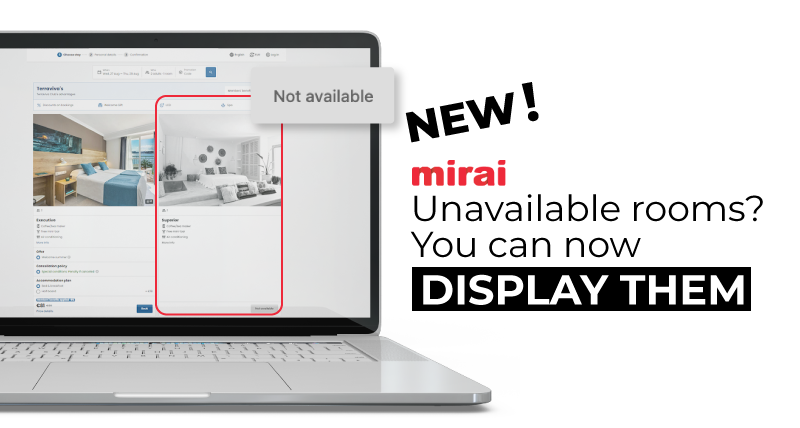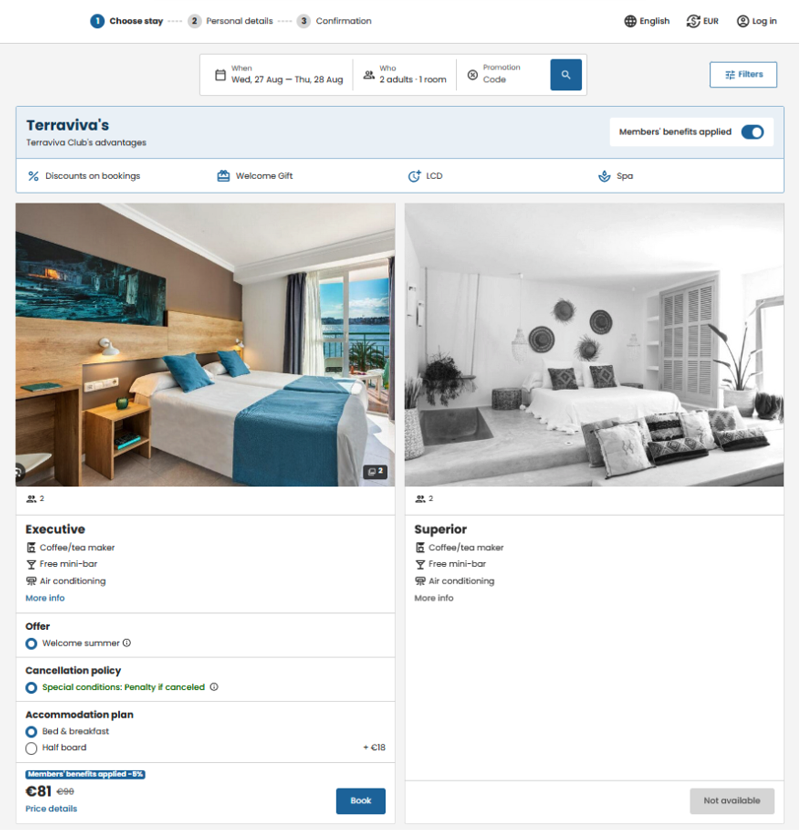En español, en français, em português.
When checking dates, some room types may no longer be available. In those cases, the question arises whether the booking engine should also display them and if doing so would have any positive effect. At Mirai, we saw it clearly and included it as a key feature of our new booking engine.

Our hypothesis was that showing the hotel is filling up would create a sense of urgency among users and push them to book sooner; that showing sold-out rooms would be a more effective sales accelerator than annoying pop-ups with artificial messages that customers don’t trust.

On the other hand, several reasons gave us pause:
- Including unnecessary information could backfire, especially in such an information-heavy step as the results page. Sold-out rooms take up a lot of space: would it hurt instead of help?
- Some hotels and chains shared their concerns about possible operational consequences.
After much internal debate, we decided to test it and measure it. What happened?
The test delivered clear results
We ran an A/B test, making sure it was statistically reliable. In other words:
- Over four weeks
- With more than 200,000 users checking availability
- Traffic was split randomly
The test was triggered whenever a hotel started to have at least one sold-out room type in a user’s query.
- Half of the users (Group A) were not shown sold-out rooms, meaning they only saw available types.
- The other half (Group B) were shown the sold-out ones at the end.
Result: Group B completed 0.97% more bookings.
To clarify: we’re talking about a 1% increase in conversion, not one percentage point more (e.g., from 4% to 5%), which would be 20%. A 1% increase means nearly 1% more sales through your website.
As an additional insight, the positive effect is four times greater on desktop than on mobile.
Note: we’re not saying the hotel’s overall conversion went up by almost 1%. This only applies to searches where some room types were already sold out—which is not every search.
Why?
The data is undeniable, but the causes are open to interpretation. The most obvious explanation is urgency: seeing that some rooms are already sold out motivates travelers to book what’s left before it’s too late.
As for the stronger impact on desktop, it may be due to the larger screen space, which makes it easier to compare available vs. unavailable at a glance. On mobile, sold-out rooms only appear at the bottom of a long scroll, by which time the user may have lost context. Again, just hypotheses. What matters is the result.
You decide
In the new Mirai booking engine, each hotel decides whether to display sold-out room types. We can configure it however you prefer. We understand some hotels, for operational or inventory management reasons, may not want to do so. However, our recommendation is clear: while the overall effect will vary from hotel to hotel, an average of nearly 1% more bookings on available room types is a very positive figure, especially considering it requires no extra effort from the hotel. We set it up once, it requires no maintenance, and the benefit is permanent. If only everything were that easy for hotels!



